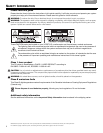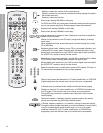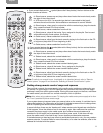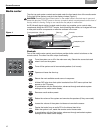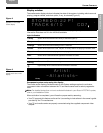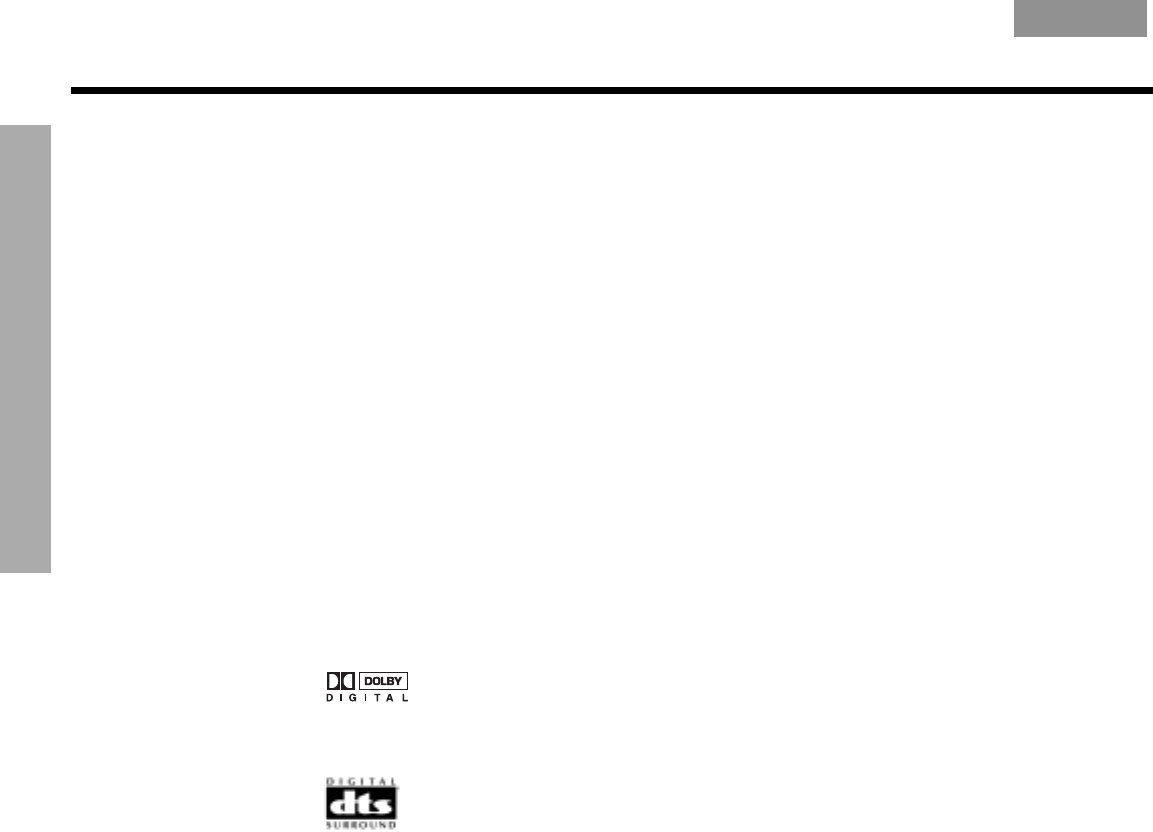
6
INTRODUCTION
!!
I
NTRODUCTION
EnglishFrançais Español
Audio and video terms defined
Aspect ratio
A
– An expression for the width of the picture relative to the height and seen when
as a rectangular TV image. For example, if the aspect ratio is 4:3 (read as 4 by 3), the shape of
that picture is 4 units wide by 3 units high. The standard TV aspect ratios are 4:3 and 16:9.
CD-R, CD-RW
C
– Abbreviations for Recordable (R) and ReWriteable (RW) Compact Disc (CD).
Data can be added to a CD-R once only and to a CD-RW more than once.
CD-ROM – The abbreviation for Read Only Memory (ROM) on a Compact Disc (CD), which
allows no data to be added.
Chapter – A main division of contents in a DVD title.
Component video – Also called YPbPr, this video signal is split into three parts: luminance
and two color signals for considerably better resolution than can be provided by either !
composite or S-video signals. This more complex signal also requires the use of component
connection jacks, which are not available on all televisions or video components.
Composite video – The simplest of three types of video signal, which combines rather than
separates brightness (black and white) and color information. It provides the lowest resolution
of the three, but is compatible with the broadest range of televisions and other video compo-
nents and requires a simple video cable connection to RCA jacks.
Dolby Digital
D
– A perceptual coding system for audio, developed by Dolby Laboratories and
accepted as an international standard. Dolby Digital is the most common means of encoding
multi-channel audio.
– The logo representing Dolby Digital.
DTS – An abbreviation for Digital Theater Systems, a type of multi-channel surround sound
format used on certain CDs and many DVDs.
– The logo representing DTS.
DVD – An abbreviation most commonly known to mean Digital Video Disc or Digital Versatile
Disc. The audio/video/data storage system is based on 12-cm optical discs.
DVD-R, DVD+R, DVD-RW, DVD+RW – Abbreviations for Recordable (R) and ReWriteable
(RW) Digital Video (or Versatile) Disc (DVD). Data can be added to a DVD-R or +R once only,
and to a DVD-RW or +RW more than once.
DVD-ROM – The abbreviation for Read Only Memory (ROM) on a Digital Video (or Versatile)
Disc (DVD), which allows no data to be added.
DVD video – A standard for storing and reproducing audio and video on DVD-ROM discs,
based on MPEG video, Dolby Digital audio, and other proprietary data formats.
DVR – An abbreviation for Digital Video Recording, sometimes used interchangeably with
PVR, for Personal Video Recording.
Gracenote –
G
Music recognition technology and related data provided as part of the service
contracted for by Bose.
IR
I
– An abbreviation for infrared. Pertains to the type of remote that sends/receives !
commands on an infrared light beam.
Letterbox
L
– A video format that has an aspect ratio wider than 4:3 and is shown with black
bars above and below the picture.




